 Open Access
Open Access
ARTICLE
Developing Reliable Digital Healthcare Service Using Semi-Quantitative Functional Resonance Analysis
Graduate School of Informatics, Nagoya University, Nagoya, 464-8601, Japan
* Corresponding Author: Zhengshu Zhou. Email:
Computer Systems Science and Engineering 2023, 45(1), 35-50. https://doi.org/10.32604/csse.2023.030848
Received 03 April 2022; Accepted 18 May 2022; Issue published 16 August 2022
Abstract
Since entering the era of Industry 4.0, the concept of Healthcare 4.0 has also been put forward and explored by researchers. How to use Information Technology (IT) to better serve people’s healthcare is one of the most featured emerging directions in the academic circle. An important field of Healthcare 4.0 research is the reliability engineering of healthcare service. Because healthcare systems often affect the health and even life of their users, developers must be very cautious in the design, development, and operation of these healthcare systems and services. The problems to be solved include the reliability of business process, system functions, and personal healthcare data. The Functional Resonance Analysis Method (FRAM) has been applied in reliability engineering for safety-critical systems in available studies, using both qualitative and quantitative approaches. However, the method has not been applied in the field of digital healthcare services development. Therefore, to narrow the gap, we present in this paper a semi-quantitative functional resonance analysis method to develop reliable healthcare services for diabetics. Moreover, this paper has tried to improve the reliability design of the service-oriented architecture (SOA) of traditional insulin pump therapy by system thinking.Keywords
An insulin pump is a computerized medical device that simulates the working principle of human pancreas. It is used to regulate normal blood glucose level for patients with diabetes. Diabetic patients do not need to inject insulin regularly after using insulin pump. This not only reduces the pain caused by subcutaneous injection, but also achieves the timeliness and accuracy of insulin delivery [1,2]. Nevertheless, there are some urgent problems to be solved, such as the possible failure of the control system leads to the untimely or inaccurate dosage of insulin.
Since the digital healthcare service system is a safety-critical system that affects the life and health of patients, system failure should be rigorously avoided. When the insulin injection is not timely or the amount of insulin injection is insufficient, it may cause damage to internal organs and eyes due to hyperglycemia; When insulin injection is too frequent or excessive, users may fall into a coma due to hypoglycemia and even lose their lives in serious cases. In fact, the failure of any complex system may be unavoidable. The difficulty of developing the health care service is that it involves different people, organizations, devices, and information systems which form a System-of-Systems (SoS). The interaction between them is complex and nonlinear, which increases the uncertainty of system operation. In addition, the failure of safety critical systems is often unbearable for patients and the institutions that provide them with medical services. Therefore, the problem of how to avoid system failure as much as possible and how to protect users’ safety in case of system failure are worth discussing.
Many researchers have explored the reliability engineering methodologies for safety critical systems development. Representative methods include Fault Tree Analysis (FTA), Man, Machine, Material, Method, Environment (4M1E) analysis, fishbone diagram, Failure Mode and Effects Analysis (FMEA), System Theoretic Accident Model and Processes (STAMP)/System Theoretic Process Analysis (STPA), AcciMap analysis, Functional Resonance Analysis Method (FRAM), etc. Among these methods, there are methods based on event decomposition, such as FTA, AcciMap, and fishbone diagram; There are also methods based on process analysis, such as STAMP/STPA and FRAM. At present, FRAM has attracted great attention of researchers. This is because FRAM can not only analyze the system reliability based on system process, but also extract the fault modes with complex causes that are difficult to find by other methods by discussing the internal relationship between functions. When analyzing complex safety critical systems, it is necessary to quantify the uncertainty of the system due to the need of risk level. Therefore, in addition to ordinary FRAM, many methods of quantitative expansion of FRAM have been proposed. At present, there have been studies on the use of FRAM in disaster response, accident cause analysis, safety process design, medical service risk analysis, etc., but there has been no report on the use of FRAM in the dependability engineering of digital health care service involving multiple stakeholders and different complex information systems. Therefore, this paper attempts to apply semi-quantitative FRAM and Monte Carlo simulation to digital health care service engineering. The contribution of this paper can be summarized as follows.
• A semi-quantitative application of FRAM to digital healthcare service development.
• Healthcare management platform, emergency response system, Insulin pump system, patient, smart devices, etc. are analyzed for reliability engineering at medical service level.
• Hazards in the operation of the insulin pump system are identified.
• The original system architecture design of the healthcare service for diabetics is improved based on the results of reliability analysis.
The remainder of this paper is organized as follows. Section 2 reviews the related work on reliability engineering for safety-critical systems and management of healthcare service, and explains the motivation of this study. Section 3 presents the semi-quantitative FRAM for dependability analysis of the healthcare service for the patients with diabetes. Section 4 proposes the countermeasures for providing reliable healthcare service for diabetic patients based on system thinking. Section 5 discusses the novelty, effectiveness, and limitation of the presented method. Finally, Section 5 concludes this paper and clarify the future direction of our research in the paper.
There are many published safety-critical system engineering theories and methods. Ping et al. [2] proposed an access control scheme by introducing feature fusion and voiceprint, to prevent eavesdropping and therapy manipulation attacks against USB/uploader and insulin pump systems. Gouyon et al. [3] presented the validation of critical industrial process architectures from the point of view of safety and operation. Mamdikar et al. [4] developed a reliability analysis framework, which maps the Unified Modeling Language (UML) state chart model into the state-space model to analyze dynamic behavior and state transition probabilities of safety-critical systems. Grabbe et al. [5] advocated the use of FRAM as a risk assessment method in the development process of highly-automated vehicles, primarily to derive system design recommendations and secondly to provide essential insights into reducing the validation work. Pardo-Ferreira et al. [6] applied FRAM to increase understanding of construction activities for building concrete structures, in order to improve resilient safety management. Menezes et al. [7] compared the results of the application of FRAM and Performance Shaping Factors (PSF), to identify the critical functions in a chemical industry that affect process safety. Salehi et al. [8] modeled and analyzed hospital to home transition processes of frail older adults, in order to identify the challenges within the process. Zinetullina et al. [9] integrated FRAM and dynamic Bayesian Network for quantitative resilience assessment of chemical process systems. Kaya et al. [10] applied FRAM by integrating Monte Carlo simulations and a criticality matrix to explore how the system-based perspective would enrich the quantified risk-orientated analysis in a tram operating system. Patriarca et al. [11] reviewed over 1700 documents to uncover a number of characteristics of the FRAM research, both in terms of the method’s application and of the authors contributing to its development. Patriarca et al. [12] evolved the traditional FRAM, proposing a semi-quantitative framework based on Monte Carlo simulation, to assess performance variability in complex systems such as ATM system. Liu et al. [13] developed FRAM into a dynamic research and analysis model, to enable FRAM analysis of important time points. Patriarca et al. [14] presented an evolution of traditional FRAM following a semi-quantitative approach based on Monte Carlo simulation for quantitatively modeling the interactions of system components. Rabena et al. [15] modeled a frequent activity in healthcare: Early detection of sepsis using FRAM, and analyzed 40 activities performed by nurses, doctors, secretaries, health workers and laboratory technicians; and illustrated possible and actual variability in the process. Bellini et al. [16] presented a fast-forward, cost-effective, and thorough enough framework to quantify resilience of complex socio-technical systems. Okano et al. [17] proposed an approach for deriving hazard transition sequences as a STAMP/STPA support method. Guzman et al. [18] compared an extension of the System-Theoretic Process Analysis (STPA-Extension) and the Uncontrolled Flows of Information and Energy (UFoI-E) method through a case study. Kim et al. [19] proposed and examined a quantitative scheme to use FRAM for risk assessment by defining rules for variability propagation and aggregation. Kumar et al. [20] developed a framework using a state-space model to quantify reliability in the design phase of the development life cycle to minimize the losses due to the system’s failure after installation. Zhang et al. [21] presented a vehicle re-identification model based on optimized DenseNet121 with joint loss, to solve the computational complexity problem caused by local attribute marking.
The management of medical services has also attracted the interest of researchers. Valla [22] reviewed the diabetes management focusing on the latest insulin analogues, alternative insulin delivery systems, and the artificial pancreas. Lucidi et al. [23] proposed a simulation-based multi-objective optimization approach for health care service management. Ross et al. [24] applied FRAM to produce a sociotechnical systems model and identify opportunities to support fluoride varnish application for children attending general dental practice. Li et al. [25] presented a secure and efficient data management system named as EdgeCare for mobile healthcare systems. Kaya et al. [26] performed the FRAM on the drug administration process in a neonatal intensive care unit (NICU) to understand performance variability as conditions change, as well as to understand how variability in functions influences the system in terms of both success and failure. Kaya et al. [27] applied a semi-quantitative approach to the FRAM, facilitating a clear understanding of the critical interactions in the FRAM model for health-care process management. Al-Jaroodi et al. [28] defined the main objectives of Health 4.0 that integrates innovative technologies such as the Internet of Health Things (IoHT), medical Cyber-Physical Systems (medical CPS), health cloud, health fog, big data analytics, machine learning, blockchain and smart algorithms, and discuss advanced potential Health 4.0 applications. Zhang et al. [29] proposed a lightweight CNN classification model based on transfer learning to analyze chest Computed Tomography (CT) for timely COVID-19 diagnosis.
The literature survey shows that the methods of safety engineering and reliability analysis of safety critical systems and health care process have been studied by both qualitative and quantitative approaches. However, the overall exploration of reliable digital healthcare service development involving business process, information systems, and medical data could still remain a challenge. This may be complex and difficult to solve, as it not only involves the safety analysis of business process, but also needs to design the reliability of information systems. Therefore, we attempt to integrate FRAM with other software engineering methods in this paper, to propose an innovative scheme to design health care service from a perspective of reliable SoS development.
3 Semi-quantitative Approach to the FRAM towards Reliable Digital Healthcare Service
The insulin pump system is introduced, and the application of semi-quantitative approach to FRAM toward reliability engineering for the system is presented in Sections 3.1 and 3.2, respectively.
Fig. 1 illustrates the hardware components and architecture of an insulin pump system [2,22]. The blood glucose sensor measures the blood glucose level of a diabetic by measuring the conductivity of blood. The embedded control system (controller) of the insulin pump calculates the necessary insulin dosage based on the measured blood glucose value or the personalized needs of patients. The pump delivers a unit of insulin according to a pulse sent by the controller. For example, 5 units of insulin are needed, the controller sends 5 pulses to the pump. Obviously, the insulin pump is a safety critical system, because if it does not work or does not work properly, the user’s health would be damaged, or they may fall into a coma due to abnormal blood glucose levels. The process for users to use the insulin pump system is summarized as shown in Tab. 1.
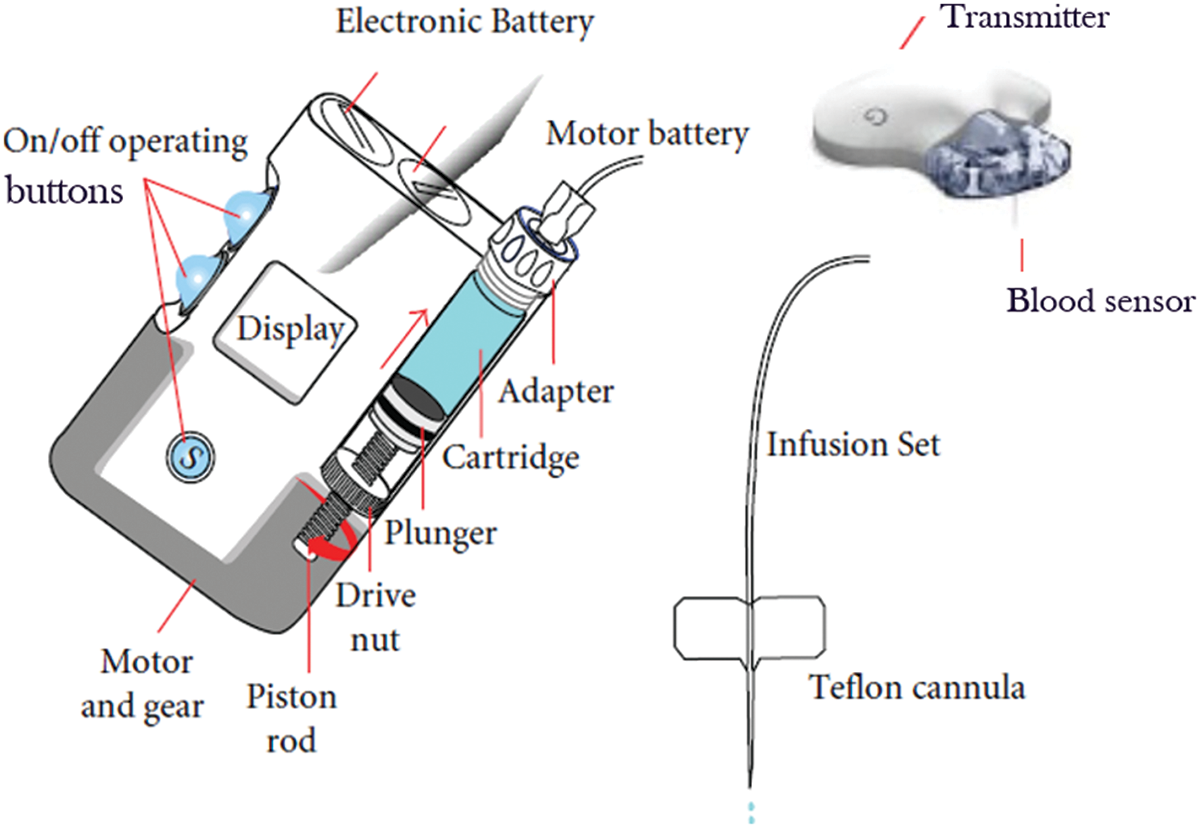
Figure 1: Hardware structure of an insulin pump [2,22]

3.2.1 The Functional Resonance Analysis Method (FRAM)
Traditional system reliability analysis methods such as FTA, can be used to explicitly analyze the cause of system failures with fault tree structure; STAMP/STPA can identify the factors that make interaction between components undesirable. These methods mainly focus on the failure mode of systems. Instead reliability analysis methods using FRAM not only discuss about failure patterns, but also consider how multiple functions interact with each other in the day-to-day operation of the system, and analyze the uncertainty of systems related to safety assurance.
As shown in Fig. 2, a FRAM model represents the functions of a system using a hexagon with six aspects, i.e., I (input of the function), T (time constrains that may affect the operation of a function), control (control strategy for operating the function), O (output of the function), resource (requirements that are needed for operating the function), and P (preconditions for operating the function). System analysts try to find the possibility of hazard that is not easy to find in the normal state by analyzing the coupling of interactions between different system functions when the target system is operated. The possibility of hazard is also called uncertainty.
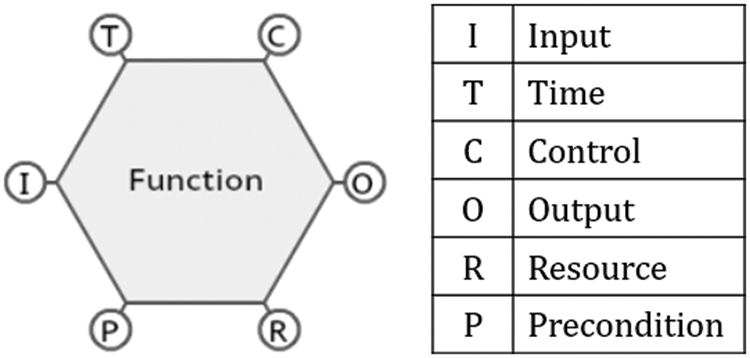
Figure 2: An example of functions in a FRAM model
3.2.2 A Semi-quantitative Application to the FRAM towards Reliable Digital Healthcare Service
The original FRAM is a qualitative analysis method that can be used to consider the variability of each function output in terms of time and accuracy, as well as the impact on downstream functions. The coupling between related functions is then investigated to analyze the uncertainty of the system. The uncertainty may be positive or negative, which needs to be analyzed and discussed according to facts of each situation. However, this qualitative analysis method is inadequate when dealing with the reliability of large-scale complex systems, because it is necessary to evaluate the coupling degree between functions for identifying key functions and critical path. The semi-quantitative analysis approach to simulate and deduce the resonance of system function by Monte Carlo method based on simulation is therefore applied to FRAM. Before simulation, it is necessary to define the probability of the output of different types of functions. As presented in Fig. 3, we adjusted the probability parameters for simulation of existing studies [10,14], to meet the needs of our study in this paper. For example, if a function is a technological one, i.e., executed by a machine, computer program, or AI, the output of the function is 90% on time, 4% too early, 4% too late, and 2% omitted.
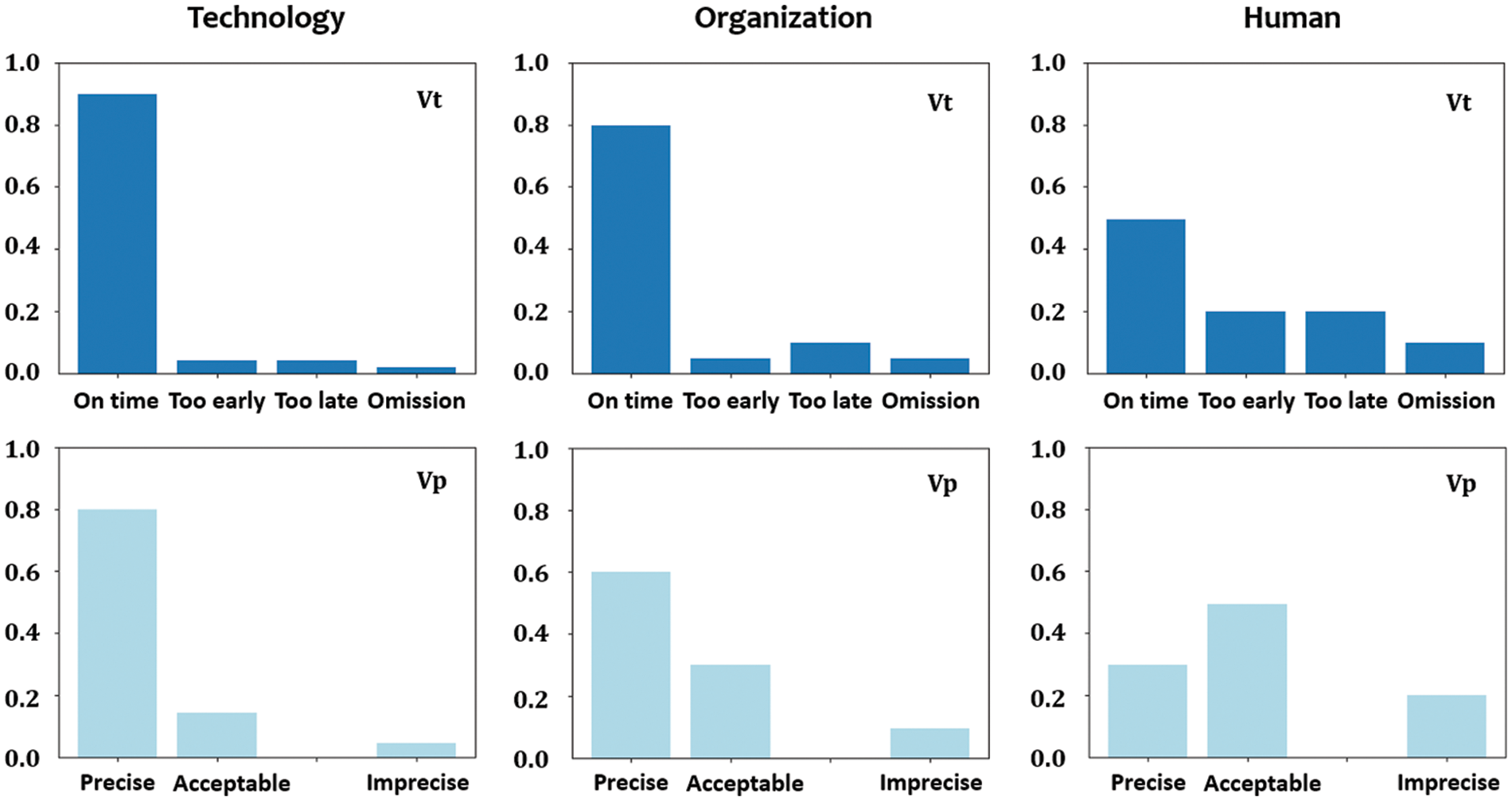
Figure 3: Probability distribution for the variability of the output from several different types of functions
The variability regarding time and precision of output of the functions is evaluated using a numerical 1–4 scale [14] as shown in Tab. 2.

Amplitude modulation coefficient of Function k to Function
Thus, the variability of a function can be expressed by Eq. (2), where n is the number of upstream functions.
The FRAM model of the insulin pump system is shown in Fig. 4. The functions of the system are connected in the order of system flow. The types of the functions, and variability of time and precision of the output are also analyzed and specified in the model (the functions with wavy line). We simulate by using the Monte Carlo method. Specifically, we generate a random number between 0–1. While identifying the type of function, we judge which interval of the random number is located in the probability distribution shown in Fig. 3 to determine the value of variability. For instance, for a technological function, if the generated random number for simulation of time of output is 0.6, since the value is in range [0.00, 0.85], the simulation result of the variability of the system function output in terms of time is therefore 1: On time (see Fig. 3 and Tab. 2). A part of the Monte Carlo simulation results are presented in Fig. 5, where the bar graph indicates the number of occurrences of variability value, and the line graph shows the cumulative probability distribution.
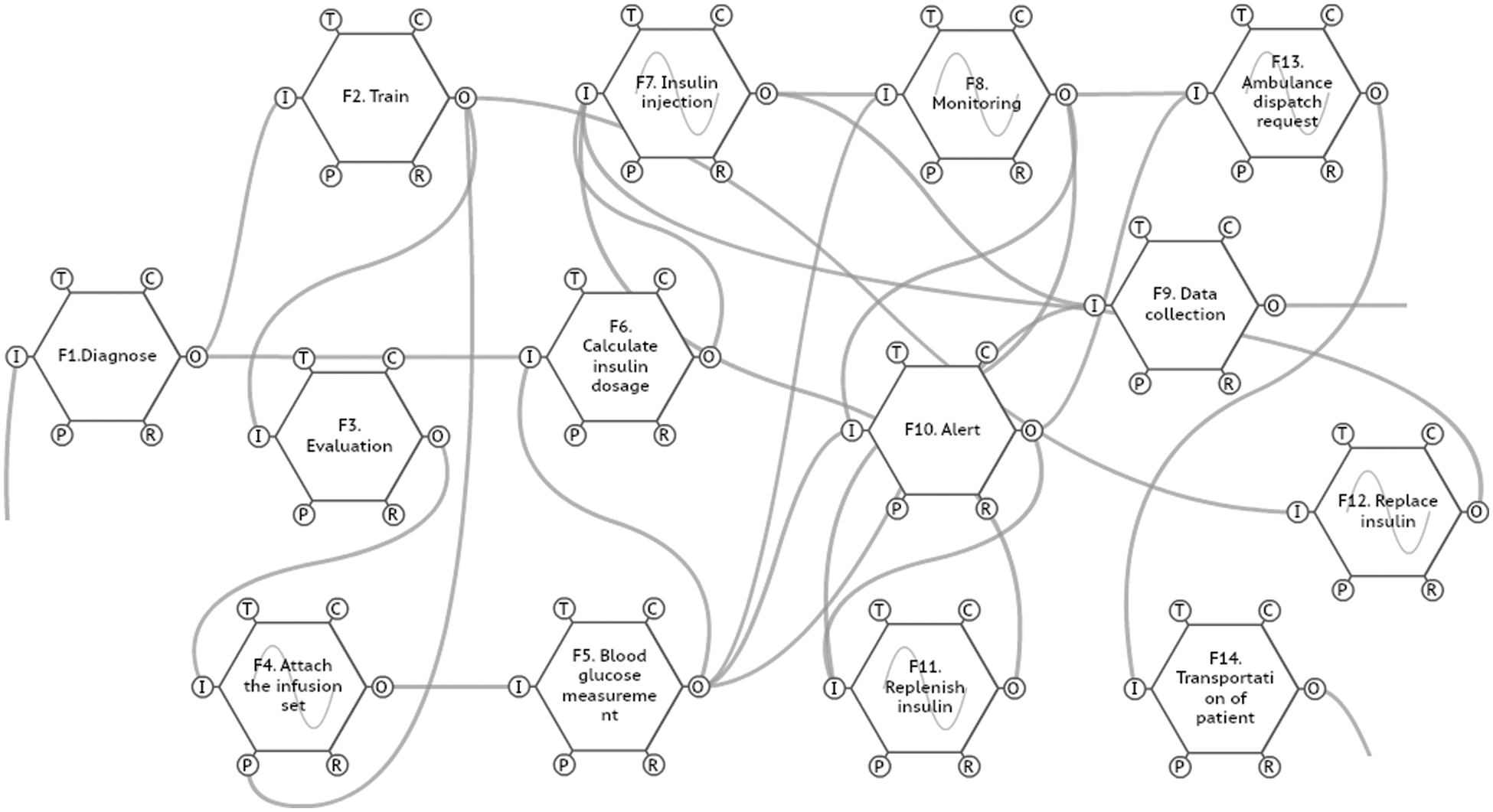
Figure 4: FRAM model for reliability analysis of the insulin pump system
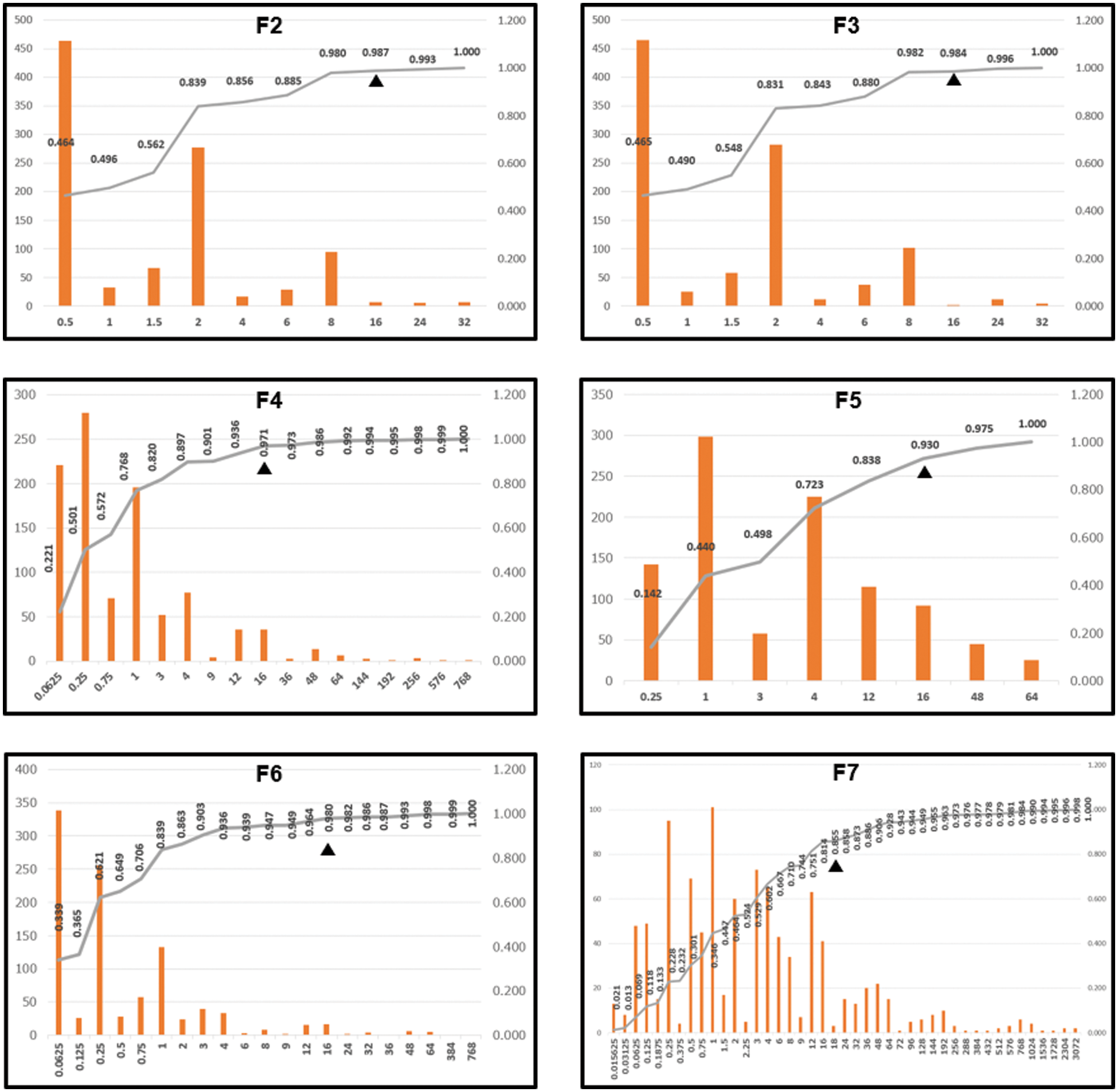
Figure 5: Simulation results of variability for the functions of the insulin pump system (excerpt)
Tab. 3 shows the parameters and results of Monte Carlo simulation used for uncertainty evaluation. We simulate 1000 times, and the threshold for key functions identification is set to 16 (the maximum variability in time multiplied by the maximum variability in precision of output of functions) [30]. If more than 95% of the simulation results do not exceed this threshold, the function is relatively reliable; Otherwise, the function has high uncertainty and should be listed as a key function that needs reliability engineering. The extracted key functions are F5, F7, F10, F11, and F14. Fig. 6 shows the critical paths of the insulin pump system. The red curve indicates that variability outside the tolerance range of the system is likely to occur during the transition of system functions. For example, F11 is a key function and the output of its upstream function F8 has potential variability in terms of time and precision, the transition F8

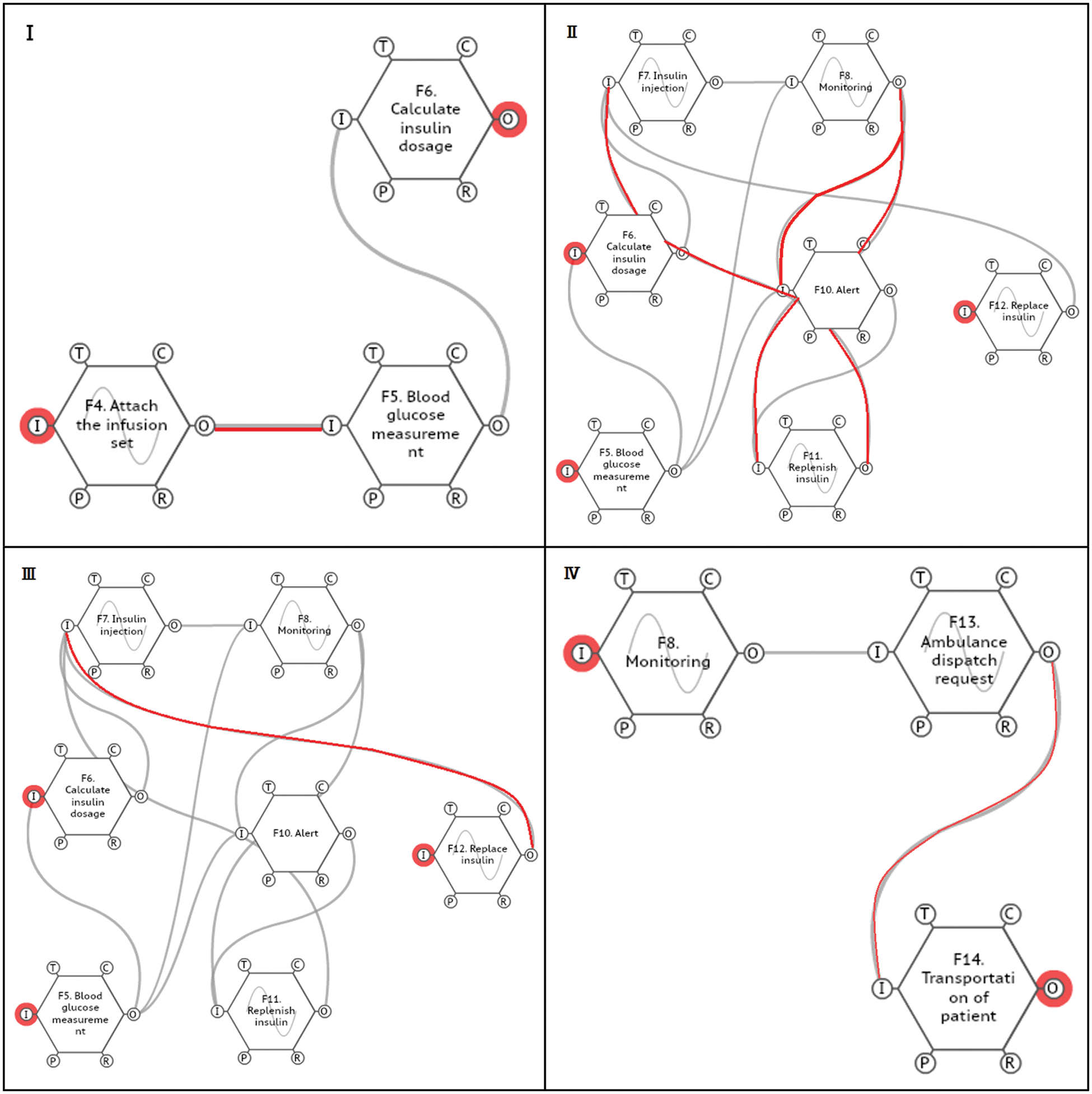
Figure 6: Critical path of the insulin pump system

4 System Engineering towards Reliable Digital Healthcare Service for Diabetic Patients
Among the potential risks listed in Tab. 4, F4
When F8

Figure 7: Systemigram of the revised scheme of reliable digital healthcare service for diabetics
This section discusses the novelty, effectiveness and threat to validity of our study in this paper.
The reliability and safety analysis method based on FRAM has been widely used in the design of safety-critical systems. In addition, after Patriarca et al. creatively proposed the semi-quantitative analysis method using Monte Carlo method [12], the ability of FRAM for large-scale complex systems reliability assessment has been improved by using the simulation approach for evaluating the uncertainty generated by system functional resonance. However, at present, there is less research on the application of FRAM in digital medical service development. Moreover, Although Kaya et al. presented a medical service safety management method based on FRAM [27], it is based on the analysis of process, rather than how to apply IT to healthcare service development. The purposes are therefore different. Tab. 5 compares the characteristics of this paper and several existing studies.

This paper presents an application of reliability engineering of healthcare service for diabetic patients based on the semi-quantitative FRAM, and shows the availability of this method through a case study of an insulin pump system. First, we clarify the function list of the system by analyzing the system process, and analyze the amplitude modulation coefficient of the output of downstream functions. We then adjust the parameters of existing studies using FRAM based on Monte Carlo method, in order to evaluate the variability of system functions through simulation. As a result, 5 key functions and 4 critical paths of the system are identified.
We analyze the potential accident scenarios on the critical path from the aspects of time and precision, and carry out the reliability development based on system thinking in the Section 4. The results show that the method shown in this paper can be applied to system engineering of reliable digital medical service to meet the needs for Healthcare 4.0. According to the simulation results, key functions of the insulin pump system were extracted, and system thinking was utilized to reliability engineering of the system. This proves that the semi-quantitative FRAM can be applied to the design and development of health care service. In addition, the combination of FRAM and systemigram model proves that modeling for reliability engineering and system engineering can be conducted concurrently in system design stage, which is often ignored in the current software engineering practice.
System reliability analysis using FRAM requires a high level of understanding of the target systems or service. Otherwise, biased conclusions may be drawn when analyzing the interaction between functions. Different people have different starting points and are likely to provide different useful views. In addition to time and precision, other factors, such as environment, may also affect the operation results of functions. In the process of analysis, it is better to convince different stakeholders such as doctors, patients, developers and analyst for contract analysis. This paper only discusses the digital medical service around the insulin pump system, without evaluating the adaptability of patients with other diseases, e.g., heart disease, severe obesity, physical disability, etc. Furthermore, new problems may be generated by reliability development, such as the security of patient personal information and medical data, and personal privacy concerns.
In the IoT era, while digital healthcare services can bring more convenient health care to patients, there are also potential risks to be resolved. How to ensure the life and health of users in complex digital healthcare processes is one of the urgent problems to be addressed. Researchers and engineers have demonstrated the superiority of FRAM in the field of safety analysis and reliability engineering. However, so far, there is no exploration on the application of FRAM in digital healthcare services development. To fill this gap, this paper presented a semi-quantitative application of FRAM to digital healthcare service development. Hazards in the operation of insulin pump system are identified and analyzed, and the original system architecture design of the healthcare service for diabetics is improved based on the results of reliability analysis. Although this paper only discusses the digital medical service utilizing the insulin pump system, it can be expected to be applied to other healthcare service for patients with other health problems such as heart disease. Furthermore, we found that FRAM can be combined with system thinking approach [31,32] to implement reliability engineering for SoS (see Section 4).
As the future work, we plan to study how to realize optimization when a variety of reliability countermeasures coexist. In addition, going to the hospital to interview the patients and their healthcare team to verify the effectiveness of this study is also the future direction of our research in this paper.
Funding Statement: The authors received no specific funding for this study.
Conflicts of Interest: The authors declare that they have no conflicts of interest to report regarding the present study.
References
1. I. Sommerville, Software Engineering, 9th ed., United State of America: Addison-Wesley, pp. 18–20, 2011. [Google Scholar]
2. Y. Ping, B. Hao, X. Hei, Y. Tu, X. Du et al., “Feature fusion and voiceprint-based access control for wireless insulin pump systems,” IEEE Access, vol. 7, no. 1, pp. 121286–121302, 2019. [Google Scholar]
3. D. Gouyon, J. Pétin, T. Cochard and C. Devic, “Architecture assessment for safety critical plant operation using reachability analysis of timed automata,” Reliability Engineering & System Safety, vol. 199, no. 106923, pp. 1–12, 2020. [Google Scholar]
4. M. R. Mamdikar, V. Kumar, P. Singh and L. Singh, “Reliability and performance analysis of safety-critical system using transformation of UML into state space models,” Annals of Nuclear Energy, vol. 146, no. 107628, pp. 1–10, 2020. [Google Scholar]
5. N. Grabbe, A. Kellnberger, B. Aydin and K. Bengler, “Safety of automated driving: The need for a systems approach and application of the functional resonance analysis method,” Safety Science, vol. 126, no. 104665, pp. 1–22, 2020. [Google Scholar]
6. M. C. Pardo-Ferreira, J. C. Rubio-Romero, A. Gibb and S. Calero-Castro, “Using functional resonance analysis method to understand construction activities for concrete structures,” Safety Science, vol. 128, no. 104771, pp. 1–13, 2020. [Google Scholar]
7. M. L. A. Menezes, A. N. Haddad and M. L. F. Nascimento, “Functional resonance analysis method and human performance factors identifying critical functions in chemical process safety,” IEEE Access, vol. 9, no. 1, pp. 168368–168382, 2021. [Google Scholar]
8. V. Salehi, N. Hanson, D. Smith, R. McCloskey, P. Jarrett et al., “Modeling and analyzing hospital to home transition processes of frail older adults using the functional resonance analysis method (FRAM),” Applied Ergonomics, vol. 93, no. 103392, pp. 1–17, 2021. [Google Scholar]
9. A. Zinetullina, M. Yang, N. Khakzad, B. Golman and X. Li, “Quantitative resilience assessment of chemical process systems using functional resonance analysis method and dynamic Bayesian network,” Reliability Engineering & System Safety, vol. 205, no. 107232, pp. 1–13, 2021. [Google Scholar]
10. G. K. Kaya, F. Ozturk and E. E. Sariguzel, “System-based risk analysis in a tram operating system: Integrating monte carlo simulation with the functional resonance analysis method,” Reliability Engineering & System Safety, vol. 215, no. 107835, pp. 1–10, 2021. [Google Scholar]
11. R. Patriarca, G. Di Gravio, R. Woltjer, F. Costantino, G. Praetorius et al., “Framing the FRAM: A literature review on the functional resonance analysis method,” Safety Science, vol. 129, no. 104827, pp. 1–23, 2020. [Google Scholar]
12. R. Patriarca, G. D. Gravio and F. Costantino, “A monte carlo evolution of the functional resonance analysis method (FRAM) to assess performance variability in complex systems,” Safety Science, vol. 91, no. 1, pp. 49–60, 2017. [Google Scholar]
13. F. Liu and J. Tian, “Dynamic analysis of FRAM: A case study of accident investigation,” in 2017 Second Int. Conf. on Reliability Systems Engineering (ICRSE), Beijing, China, pp. 1–6, 2017. [Google Scholar]
14. R. Patriarca, G. D. Gravio, F. Costantino and M. Tronci, “The functional resonance analysis method for a systemic risk based environmental auditing in a sinter plant: A semi-quantitative approach,” Environmental Impact Assessment Review, vol. 63, no. 1, pp. 72–86, 2017. [Google Scholar]
15. D. C. Raben, B. Viskum, K. L. Mikkelsen, J. Hounsgaard, S. B. Bogh et al., “Application of a non-linear model to understand healthcare processes: Using the functional resonance analysis method on a case study of the early detection of sepsis,” Reliability Engineering & System Safety, vol. 177, no. 1, pp. 1–11, 2018. [Google Scholar]
16. E. Bellini, L. Coconea and P. Nesi, “A functional resonance analysis method driven resilience quantification for socio-technical systems,” IEEE Systems Journal, vol. 14, no. 1, pp. 1234–1244, 2020. [Google Scholar]
17. K. Okano, P. Yang, S. Ogata and K. Okamoto, “Deriving of time constants in timed automata for hazard transition sequences for STAMP/STPA,” Procedia Computer Science, vol. 176, no. 1, pp. 1392–1401, 2020. [Google Scholar]
18. N. H. C. Guzman, J. Zhang, J. Xie and J. A. Glomsrud, “A comparative study of STPA-extension and the UFoI-E method for safety and security co-analysis,” Reliability Engineering & System Safety, vol. 211, no. 107633, pp. 1–18, 2021. [Google Scholar]
19. Y. C. Kim and W. C. Yoon, “Quantitative representation of the functional resonance analysis method for risk assessment,” Reliability Engineering & System Safety, vol. 214, no. 107745, pp. 1–11, 2021. [Google Scholar]
20. V. Kumar, K. C. Mishra, P. Singh, A. N. Hati, M. R. Mamdikar et al., “Reliability analysis and safety model checking of safety-critical and control systems: A case study of NPP control system,” Annals of Nuclear Energy, vol. 166, no. 108812, pp. 1–10, 2022. [Google Scholar]
21. X. Zhang, X. Chen, W. Sun and X. He, “Vehicle Re-identification model based on optimized DenseNet121 with joint loss,” Computers, Materials & Continua, vol. 67, no. 3, pp. 3933–3948, 2021. [Google Scholar]
22. V. Valla, “Therapeutics of diabetes mellitus: Focus on insulin analogues and insulin pumps,” Experimental Diabetes Research, vol. 2010, no. 1, pp. 1–14, 2010. [Google Scholar]
23. S. Lucidi, M. Maurici, L. Paulon, F. Rinaldi and M. Roma, “A simulation-based multiobjective optimization approach for health care service management,” IEEE Transactions on Automation Science and Engineering, vol. 13, no. 4, pp. 1480–1491, 2016. [Google Scholar]
24. A. Ross, A. Sherriff, J. Kidd, W. Gnich, J. Anderson et al., “A systems approach using the functional resonance analysis method to support fluoride varnish application for children attending general dental practice,” Applied Ergonomics, vol. 68, no. 1, pp. 294–303, 2018. [Google Scholar]
25. X. Li, X. Huang, C. Li, R. Yu and L. Shu, “EdgeCare: Leveraging edge computing for collaborative data management in mobile healthcare systems,” IEEE Access, vol. 7, no. 1, pp. 22011–22025, 2019. [Google Scholar]
26. G. K. Kaya, H. F. Ovali and F. Ozturk, “Using the functional resonance analysis method on the drug administration process to assess performance variability,” Safety Science, vol. 118, no. 1, pp. 835–840, 2019. [Google Scholar]
27. G. K. Kaya and M. F. Hocaoglu, “Semi-quantitative application to the functional resonance analysis method for supporting safety management in a complex health-care process,” Reliability Engineering & System Safety, vol. 202, no. 106970, pp. 1–13, 2020. [Google Scholar]
28. J. Al-Jaroodi, N. Mohamed and E. Abukhousa, “Health 4.0: On the way to realizing the healthcare of the future,” IEEE Access, vol. 8, no. 1, pp. 211189–211210, 2020. [Google Scholar]
29. X. Zhang, J. Zhou, W. Sun and S. K. Jha, “A lightweight CNN based on transfer learning for COVID-19 diagnosis,” Computers, Materials & Continua, vol. 72, no. 1, pp. 1123–1137, 2022. [Google Scholar]
30. Y. Zhang and Y. Fan, “Research on resilience improvement of road transportation system of dangerous chemicals based on FRAM,” Master’s thesis, China University of Geosciences, China, 2018. [Google Scholar]
31. R. Cloutier, B. Sauser, M. Bone and A. Taylor, “Transitioning systems thinking to model-based systems engineering: Systemigrams to SysML models,” IEEE Transactions on Systems, Man, and Cybernetics: Systems, vol. 45, no. 4, pp. 662–674, 2015. [Google Scholar]
32. Q. Zhi and Z. Zhou, “Empirically modeling enterprise architecture using ArchiMate,” Computer Systems Science and Engineering, vol. 40, no. 1, pp. 357–374, 2022. [Google Scholar]
33. W. Huang, D. Yin, Y. Xu, R. Zhang and M. Xu, “Using N-K model to quantitatively calculate the variability in functional resonance analysis method,” Reliability Engineering & System Safety, vol. 217, no. 108058, pp. 1–11, 2022. [Google Scholar]
34. D. Oleo, L. McIntyre, N. Randall, R. Nayak and L. Manning, “A socio-technical approach to food safety incident analysis using the AcciMap model in the hospitality sector,” Food Control, vol. 136, no. 108849, pp. 1–11, 2022. [Google Scholar]
Cite This Article
 Copyright © 2023 The Author(s). Published by Tech Science Press.
Copyright © 2023 The Author(s). Published by Tech Science Press.This work is licensed under a Creative Commons Attribution 4.0 International License , which permits unrestricted use, distribution, and reproduction in any medium, provided the original work is properly cited.


 Submit a Paper
Submit a Paper Propose a Special lssue
Propose a Special lssue View Full Text
View Full Text Download PDF
Download PDF Downloads
Downloads
 Citation Tools
Citation Tools